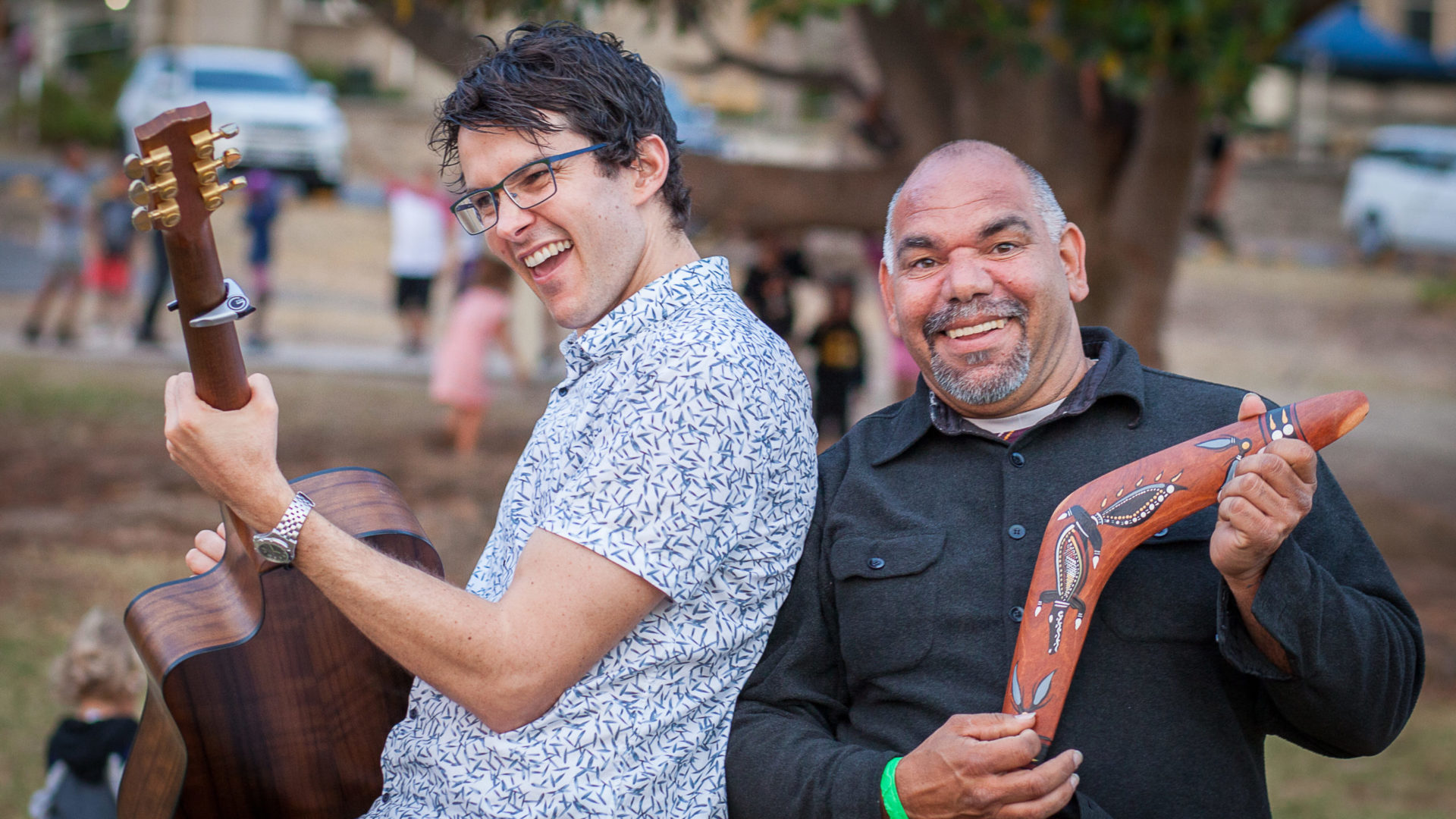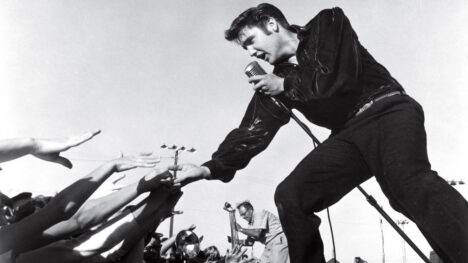Heal our country
July 1, 2021

NAIDOC Week is held in the first week of July (Sunday to Sunday) and incorporates the second Friday—which historically was celebrated as “National Aboriginal Day”. NAIDOC stands for National Aboriginal and Islanders Day Observance Committee. Signs editor Jarrod Stackelroth chats with Pastor Darren Garlett, Aboriginal and Torres Strait Islander Ministries director for the Seventh-day Adventist Church in Australia.
Jarrod Stackelroth: Why is NAIDOC Week significant?
Darren Garlett: NAIDOC is about celebrating Aboriginal and indigenous communities, culture, achievements and history. It’s designed for all of Australia to come together. They give out awards at the National NAIDOC Awards Ceremony, such as Elder of the Year. Sportspeople, academic achievements, business achievements get recognised. It brings the Indigenous community together to celebrate people who are making contributions to that community.
We invite people from different backgrounds to come and be a part of the celebrations: to learn, participate in and increase awareness, even if they’re not Aboriginal. When Indigenous people see non-Aboriginal people there, it’s a welcome sight. It’s not like, “Hey this is our day, what are you doing here?” We want to let the community know everyone is welcome. A lot of non-Aboriginal people say, I don’t know any Aboriginal people. Right away, [the NAIDOC week celebrations] put them in a setting where there’s a whole lot of Indigenous people and they can connect with them.
JS: For 2021, the theme is Heal Country. Why was it chosen?
DG: The year’s theme was developed [by the National NAIDOC Committee] because of certain things that have happened in the community and impacted the community. One year the NAIDOC theme was “Because of her”, which focused on highlighting women in the Aboriginal and Islander community. This year’s NAIDOC week theme comes off the back of the desecration of sacred sites that held great significance—the destuction of Juukan Gorge Caves by Rio Tinto and the clearing of ancient trees in Victoria to make way for a new road.
JS: The destruction of these places is devastating for Indigenous people. What message can all of us take from the Heal Country theme?
DG: Everyone needs to stop and recognise the wealth we do have. I’m not talking about minerals in the ground. We’ve got one of the most beautiful countries in the world, the most diverse, and it’s there for everyone to use. If we respect it, it will take care of us. It will be there for generations and focusing on this idea of healing country is all about taking the time and realising what we’ve got—and embracing it as an important part of Australia’s national heritage.
JS: There’s been a lot in the news about racial injustice. Does National NAIDOC week bring opportunities to raise awareness about those sorts of issues?
DG: The NAIDOC week events are about celebrating achievements and change. These awards and achievements come off the back of some of the injustices we still struggle with in our communities. They’re significant against the background some of the people have come from, the barriers they’ve overcome and the systems that are in place. So we celebrate the journey of those who have overcome a lot of these barriers and are still making their mark and playing a major part in their community.
JS: What are some ideas for people, as churches, organisations, workplaces or even as families and individuals to get involved in and more aware about NAIDOC events and what they can do?
DG: You can go onto the NAIDOC website and there’s always a list of events that are happening—by states or council—there will be something happening in your area. It’s a great opportunity for people to celebrate together and think about the history of Indigenous people and that they’re still here celebrating and part of our society today. You can go into your community and meet real people, not just what you see on TV.
JS: How does an event like NAIDOC roll back some of the stereotypes of Indigenous people?
DG: Just attending a NAIDOC event will change your perception. There is a common perception that a lot of Aboriginal people don’t work. When you go to an event like NAIDOC, it’s actually run by Indigenous organisations and people are employed and leading in their fields, running really respected services—they have the trust of the people. Other perceptions are that they’re all drinking and smoking. You go to these events, there’s no alcohol, no smoking. These events are for families and children, all ages—grandmothers right through to the little ones, enjoying themselves. These events help change perceptions about Indigenous people: to be seen as more than they are portrayed in the media.
JS: What should Christians do with NAIDOC week?
DG: NAIDOC originally started with Indigenous Christian people wanting to bring about change. They went on to make it a national day, basically a day of mourning as a way of getting people’s attention. They were wanting change in their society. They wanted a place Indigenous people can come together, be recognised and appreciated. And this was church people doing it.
NAIDOC Week is really something significant that the churches need to be a part of today. A majority of Indigenous Australians still have a Christian background. The church in the past has been at the forefront of some of these things. But today we forget that. We [the church] let others lead the way and then sit back and wait. Churches must continue to lead.
JS: As a Christian leader, you’re heavily involved in serving the Indigenous community. I guess there’s been some hurt perpetrated by church institutions over the years, but what role can the church play? What are some of the hopeful things you see in the partnership between Indigenous people and the church?
DG: It’s imperative for the church to be involved in celebrating and working towards those achievements with our Indigenous people, because the histories of the past have been passed down through policies enforced by police and sometimes carried out by the church. So there’s an obligation for the church to make right the wrongs. As an institution who has taken away culture, taken away language from Indigenous people, this is a time for churches to add value back—which in turn adds value to the church.

In 2019 leaders from the Seventh-day Adventist Church in Western Australia joined me at the big NAIDOC event in Perth—joined the celebrations and mingled with people. For them it was a great time of awareness and a chance to see the Aboriginal and Torres Strait community from a different perspective.
JS: The 2020 NAIDOC awards were cancelled but will be held in Alice Springs this year. What impact has Covid-19 been having in the Indigenous community.
DG: Covid has brought uncertainty for everyone. Our people are reluctant to travel—that fear is there—the fear somebody might get Covid from going into town and come back to their communities and it’ll spread from one community to the next. If that happens, it’s going to have a devastating impact on Indigenous people. There’s a real fear at the centre of some of this stuff. When Indigenous people do go to seek medical help, they don’t always get what they need. If they get turned away and infection is not picked up, the risk is even greater.
JS: I guess remote communities have limited internet access.
DG: Yeah. This is the isolation they’re experiencing. Aboriginal people have a culture that is heavily based on relationships. Sure, you can have the phone call, but there’s nothing like being face-to-face. Because as an Indigenous person, you pick up on all these other levels of communication when you’re around people. It’s not just hearing what they’re saying, it’s seeing what they’re saying that counts. However, in some of the places that have been cut off, they’re doing a lot more in their own community and that bond is becoming stronger.
JS: What about mental health impacts from that sense of isolation, that sense of anxiety about what’s going to happen in the world?
DG: It does have an impact, but Indigenous people have always had a really good release mechanism: Getting out in country. It’s about coming back to the things that bring that sense of peace—and in many cases, that’s country. That makes up for some of that anxiety.
But for serious mental health problems, it is a big issue. Especially in some of our remote areas. Not being able to get into the major centres and towns for treatment and the monotony of being in one place. When travel is restricted there, it escalates those issues.
JS: The pandemic brings another meaning to the Heal country theme; with so much pain and devastation around the world, we’re seeing on the news a lot of deaths everywhere.
DG: There’s a lot of healing needed. This theme is a cry from the people. While it speaks about country here, the landscape and what we used to have here in Australia, heal country is a cry for all people around the world to stop and take stock of what we’ve got and how we can do things better. So peace and harmony can extend as well.
JS: What’s one thing you’d like to leave with someone who’s reading this?
DG: NAIDOC celebrations are about coming together and recognising the achievements of Indigenous people. You don’t have to be Aboriginal, but it is important to stop for a moment and think, how good is life?
Look at how good we got it now, because things could be worse. Even if we are having a rough time, if your readers are having their own personal challenges, there’s still lots to celebrate in life. That’s all part of resilience—looking for things to celebrate, even when stuff’s pretty rubbish.
Jarrod Stackelroth is editor of Signs of the Times. Pastor Darren Garlett is ATSIM director for the Seventh-day Adventist Church. Find the Signs Radio podcast on NAIDOC Week at signsofthetimes.org.au/podcast









